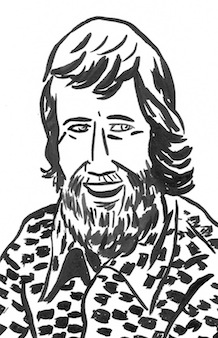
Cartoonist Al Capp was rich before he turned thirty, published a comic strip that ran for forty-three years, and his fans included luminaries like Charlie Chaplin and John Steinbeck. Not bad for a guy who got his start drawing lewd pictures of a sexy teacher for his classmates.
In their biography Al Capp: A Life to the Contrary, Michael Schumacher and Denis Kitchen illustrate how hard it would be to overstate the popularity of Capp’s “Li’l Abner” comic strip, which spawned a Hollywood movie and a Broadway musical. In a 1947 New Yorker profile of Capp that ran in two parts, E.J. Kahn, Jr. wrote that comics had supplanted motion pictures and radio as the most popular form of American entertainment. Capp was the biggest player on the scene.
Schumacher and Kitchen give crisp context to the near half-century that “Li’l Abner” entertained readers. Their subject, a noted teller of tall tales, lost his leg in a trolley accident as a child, but exactly what happened remains unclear, due to the many versions of the story that Capp told over the years. When he became the country’s most popular doodler, he regularly wrote letters to kids in hospitals who had to face amputations. The book contains a great chapter detailing the hardscrabble life of an aspiring cartoonist, as Capp bums around boardwalks looking to make an occasional buck on caricature work. A gifted storyteller, Capp conned his way into free semesters at a healthy list of art schools.
Just as A Life to the Contrary tells the story of Capp’s ascension to comic strip glory, it chronicles his descent into ignominy. As Capp aged, he used his strip to rail against protesters of the Vietnam War, earning the dubious achievement of approval from Richard Nixon and J. Edgar Hoover. Later, Capp faced accusations of making sexual advances toward students on his campus speaking tours.
But beyond Capp’s troubled (and disturbing) later years, Schumacher and Kitchen show readers that before “Pogo” or “Doonesbury,” there was “Li’l Abner.” Capp was a pioneer in combining the art of the gag comic with the format of a serial story, crafting long-running arcs in the funny pages aimed at kids and adults alike. He wrote about goofy hicks in a town called Dogpatch, but his comics were topical and sometimes edgy. Within his world of comics, he created Sadie Hawkins Day and many other inventions with lasting impact on little corners of popular culture.

Al Capp: A Life to the Contrary. Illustration by Nathan Gelgud, 2013.









































